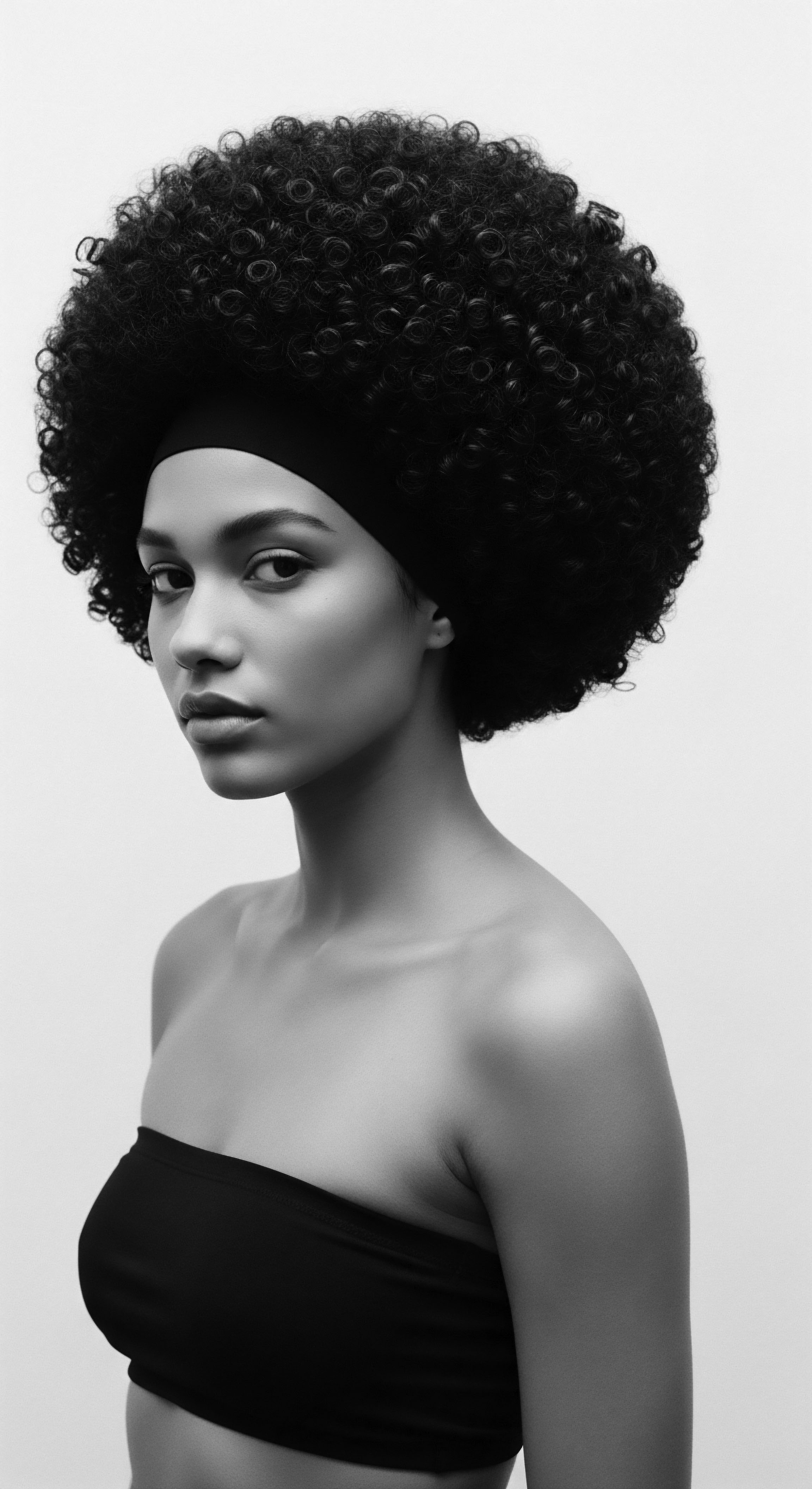
Fundamentals
Within the vibrant spectrum of human existence, the term Melanin Protection carries a profound significance, especially when viewed through the lens of textured hair heritage. At its core, Melanin Protection refers to the inherent biological shield provided by melanin, the natural pigment that graces our skin, eyes, and hair. This protective capacity extends beyond mere coloration, serving as a fundamental defense mechanism against environmental aggressors. For textured hair, often rich in eumelanin, the darker form of melanin, this defense mechanism takes on particular importance, safeguarding the delicate protein structures that compose each strand.
The initial understanding of Melanin Protection in hair begins with its elemental role as a shield against ultraviolet (UV) radiation. Sunlight, while essential for life, emits UV rays that can degrade hair proteins, leading to dryness, brittleness, and a compromise of the strand’s integrity. Melanin, particularly eumelanin, absorbs and scatters these harmful rays, effectively diminishing their penetration into the hair shaft.
This natural absorption acts as a built-in sunscreen, a gift from ancestral lineages. The presence of melanin within the hair cortex, the central part of the hair strand, allows it to intercept radiation before it can inflict substantial damage.
Beyond solar defense, Melanin Protection encompasses a broader resilience. It speaks to the structural stability melanin imparts to hair fibers. Hair with higher melanin content, often seen in darker, more coiled textures, tends to exhibit a greater tensile strength and a reduced susceptibility to certain types of oxidative stress.
This characteristic contributes to the hair’s overall durability, enabling it to withstand the rigors of daily manipulation and environmental exposure. The biological explanation of Melanin Protection, therefore, transcends a simple chemical reaction; it represents an ancestral endowment, a foundational element in the enduring strength of textured hair.
Melanin Protection, at its essence, is the inherent biological defense mechanism within hair, primarily against environmental stressors, particularly pronounced in textured hair due to its rich melanin content.
This protective quality has always been implicitly understood across generations, long before scientific laboratories could quantify its mechanisms. Ancestral communities, observing the resilience of their hair in varied climates, developed practices that instinctively supported this natural defense. These practices, passed down through oral traditions and communal rituals, laid the groundwork for what we now identify as holistic hair care. They understood, through generations of lived experience, the intrinsic value of their hair’s dark pigment and the need to honor its capabilities.

The Pigment’s Purpose
Melanin, a complex biopolymer, exists primarily in two forms within hair ❉ Eumelanin, responsible for black and brown shades, and Pheomelanin, which contributes to red and yellow tones. Textured hair types, particularly those with tight coils and kinks, typically possess a higher concentration of eumelanin. This darker pigment offers superior protection against the sun’s harsh rays.
Eumelanin’s chemical structure allows it to absorb a wider spectrum of UV radiation, transforming it into heat rather than allowing it to damage the hair’s keratin structure. This conversion minimizes the formation of harmful free radicals, which can otherwise lead to oxidative damage, compromising hair strength and elasticity.
The distribution of melanin within the hair strand also plays a role. In textured hair, melanin granules are often dispersed more diffusely throughout the cortex, creating a more uniform protective barrier. This contrasts with some straighter hair types where melanin might be more clustered. The architectural design of coiled hair itself, with its unique elliptical cross-section, further contributes to its inherent strength and its capacity to retain moisture, complementing the melanin’s protective role.
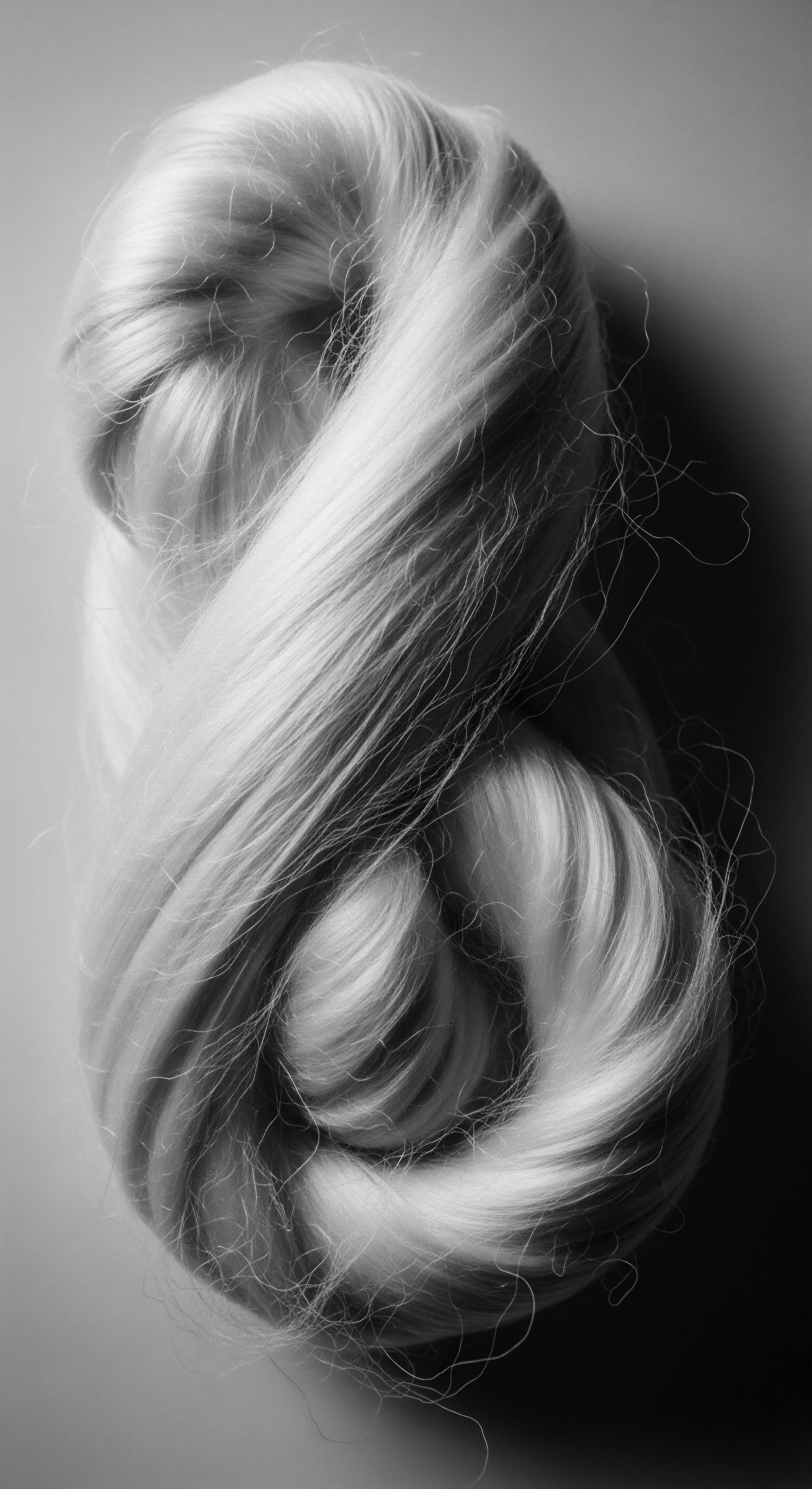
Early Observations of Resilience
For millennia, communities with textured hair observed their strands’ unique properties, even without understanding the underlying science of melanin. They recognized that their hair, despite its often drier nature, possessed a remarkable resistance to environmental wear. This empirical knowledge led to the development of specific care regimens.
These early practices focused on moisturizing, gentle handling, and protective styling, all of which indirectly supported the hair’s natural Melanin Protection. The application of natural oils and butters, for example, not only provided external conditioning but also formed a physical barrier, working in concert with melanin to shield the hair from the elements.
In many ancestral societies, hair was not merely an aesthetic feature; it was a living chronicle of identity, status, and connection to the divine. The reverence for hair meant its preservation was paramount. This cultural valuation naturally led to practices that maintained its health and inherent protective qualities. The rituals of cleansing, oiling, and styling were acts of profound care, deeply intertwined with the recognition of hair’s intrinsic strength and its need for sustained nourishment.
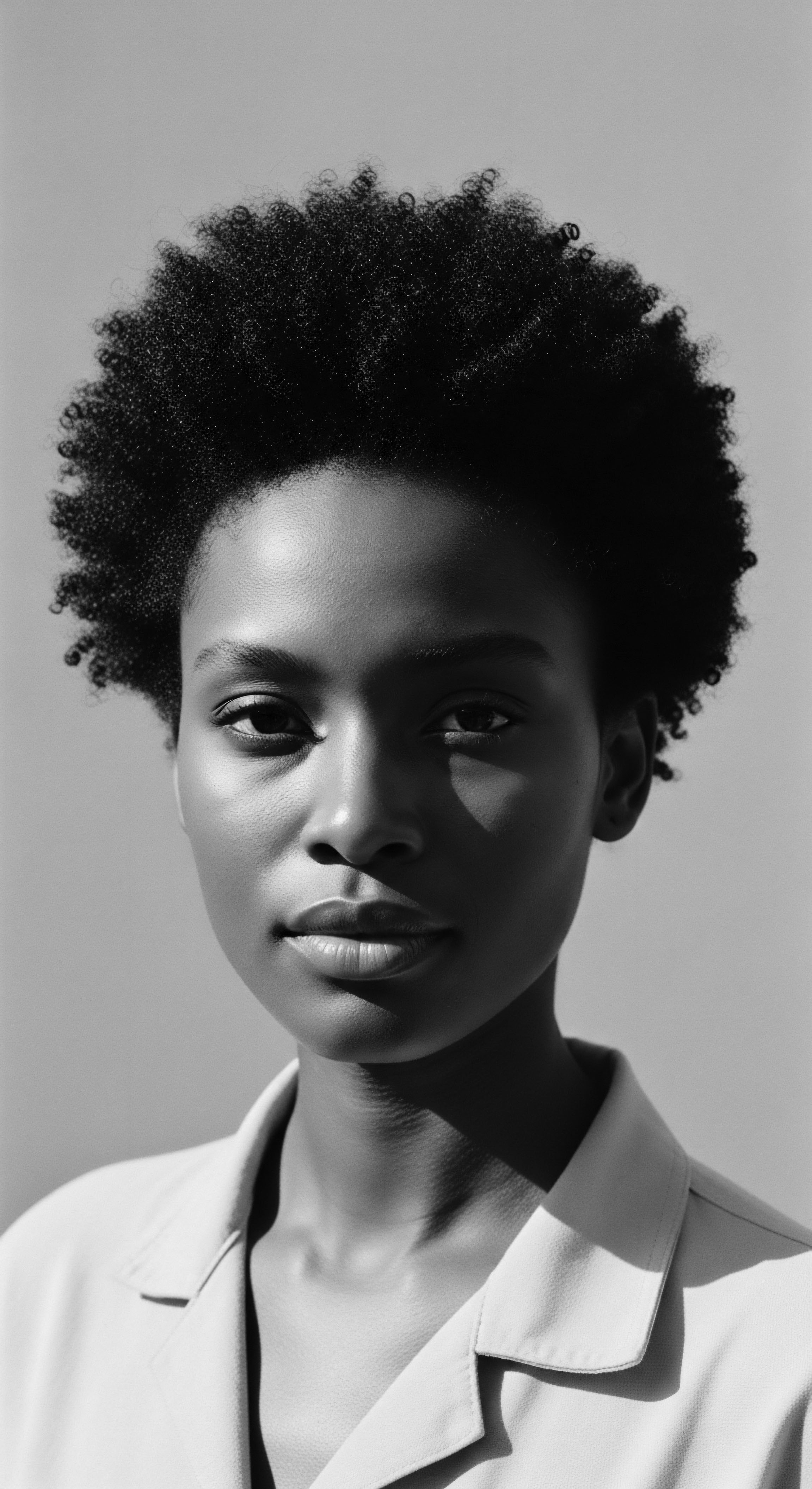
Intermediate
Building upon the foundational understanding of melanin’s inherent protective capabilities, the intermediate exploration of Melanin Protection delves into its deeper significance within the intricate biology and cultural narratives of textured hair. This concept extends beyond simple UV filtration, encompassing melanin’s role in the hair’s structural integrity, its moisture balance, and its response to various forms of stress. The meaning of Melanin Protection, therefore, expands to signify a complex interplay of biological attributes and historical care traditions that have shaped the resilience of Black and mixed-race hair experiences across generations.
The unique helical structure of textured hair, characterized by its coiling and bending, presents specific challenges and advantages. While the coils can make it prone to dryness and breakage at the points of curvature, the very presence of abundant eumelanin provides a counterbalancing strength. Melanin granules act as internal shock absorbers, reinforcing the hair shaft against physical stressors.
This biological reality underscores why traditional practices focused heavily on minimizing manipulation and providing consistent moisture, instinctively acknowledging the hair’s need for both internal and external reinforcement. The interpretation of Melanin Protection here becomes one of biological endowment meeting ancestral wisdom.
Consider the historical context of hair care within various African societies. Before the profound disruptions of the transatlantic slave trade, hair was a canvas of communication, denoting age, marital status, tribal affiliation, and social standing. The elaborate styles, often requiring hours or days to create, were not solely for aesthetic appeal.
They frequently incorporated natural ingredients—like shea butter, palm oil, and various herbal infusions—that provided emollience, strength, and an added layer of environmental defense. These practices, passed from elder to youth, represented a living library of Melanin Protection, a testament to deep observational knowledge.
Melanin Protection is a dynamic interplay of biological resilience and ancestral care, woven into the very fabric of textured hair heritage.
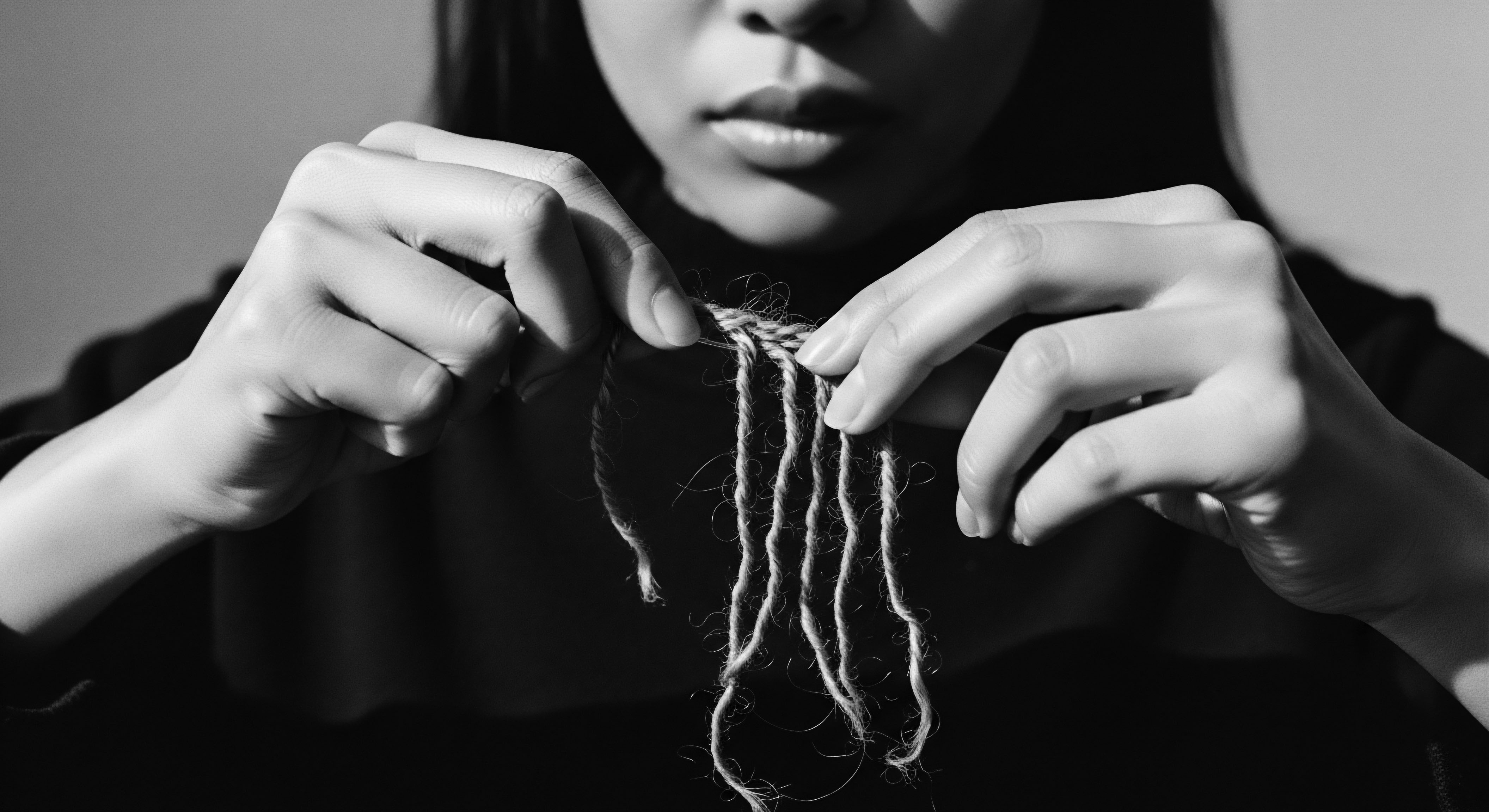
The Tender Thread ❉ Ancestral Care and Environmental Harmony
The practices of hair care in pre-colonial African communities were deeply attuned to the natural environment and the hair’s inherent characteristics. The application of oils and butters, for instance, served multiple purposes. They sealed moisture into the hair strand, preventing the rapid evaporation common in arid climates, and provided a physical barrier against dust, wind, and sun. This foresight in traditional hair care effectively augmented the hair’s natural Melanin Protection, creating a symbiotic relationship between human ingenuity and biological design.
A significant aspect of this historical care was the widespread use of Protective Styles. Styles such as braids, twists, and locs were not merely decorative; they shielded the delicate ends of the hair, the oldest and most vulnerable parts, from daily manipulation and environmental exposure. By tucking away the hair, these styles minimized breakage and allowed for length retention, preserving the hair’s vitality over extended periods. This ancestral knowledge of protective styling is a direct reflection of an intuitive understanding of Melanin Protection and the need to safeguard the hair’s inherent strength.
Let us consider the example of the Himba people of Namibia. Their iconic hair ritual, involving the application of a paste called Otjize (a mixture of ochre, butterfat, and aromatic resins), serves as a powerful illustration of holistic Melanin Protection. This practice not only provides deep conditioning and color but also acts as a physical barrier against the harsh desert sun and dry winds.
The ochre, rich in iron oxides, offers a natural mineral-based sun shield, while the butterfat seals in moisture. This centuries-old tradition showcases a sophisticated, ancestral approach to preserving hair health, acknowledging and enhancing its natural defenses.
The collective memory of these traditions, even when disrupted by historical trauma, continues to shape contemporary hair care. The enduring presence of natural oils, butters, and protective styles in Black and mixed-race hair routines today is a direct echo of these ancestral practices, a testament to the wisdom passed down through generations. The meaning of Melanin Protection in this context becomes a bridge between past and present, a celebration of inherited knowledge.
| Traditional Practice Oiling and Buttering Hair (e.g. Shea Butter, Palm Oil) |
| Purpose in Ancestral Context To moisturize, add sheen, and create a physical barrier against environmental elements. |
| Scientific Link to Melanin Protection Lipids in oils seal the cuticle, reducing moisture loss and providing a physical layer that can reflect or absorb some UV, working alongside melanin's inherent UV absorption. |
| Traditional Practice Protective Styling (e.g. Braids, Twists, Locs) |
| Purpose in Ancestral Context To minimize manipulation, prevent tangling, and shield hair ends from damage. |
| Scientific Link to Melanin Protection Reduces mechanical stress and exposure to environmental factors (UV, pollution), preserving the melanin-rich keratin structure and preventing oxidative degradation. |
| Traditional Practice Herbal Rinses and Infusions (e.g. Amla, Henna in some contexts) |
| Purpose in Ancestral Context To cleanse, condition, and sometimes add color or strength. |
| Scientific Link to Melanin Protection Antioxidant compounds in some herbs can mitigate oxidative stress, protecting melanocytes and melanin within the hair shaft, thus maintaining pigment integrity and hair health. |
| Traditional Practice These practices, deeply rooted in heritage, demonstrate an intuitive understanding of hair's needs, complementing its natural melanin-derived resilience. |
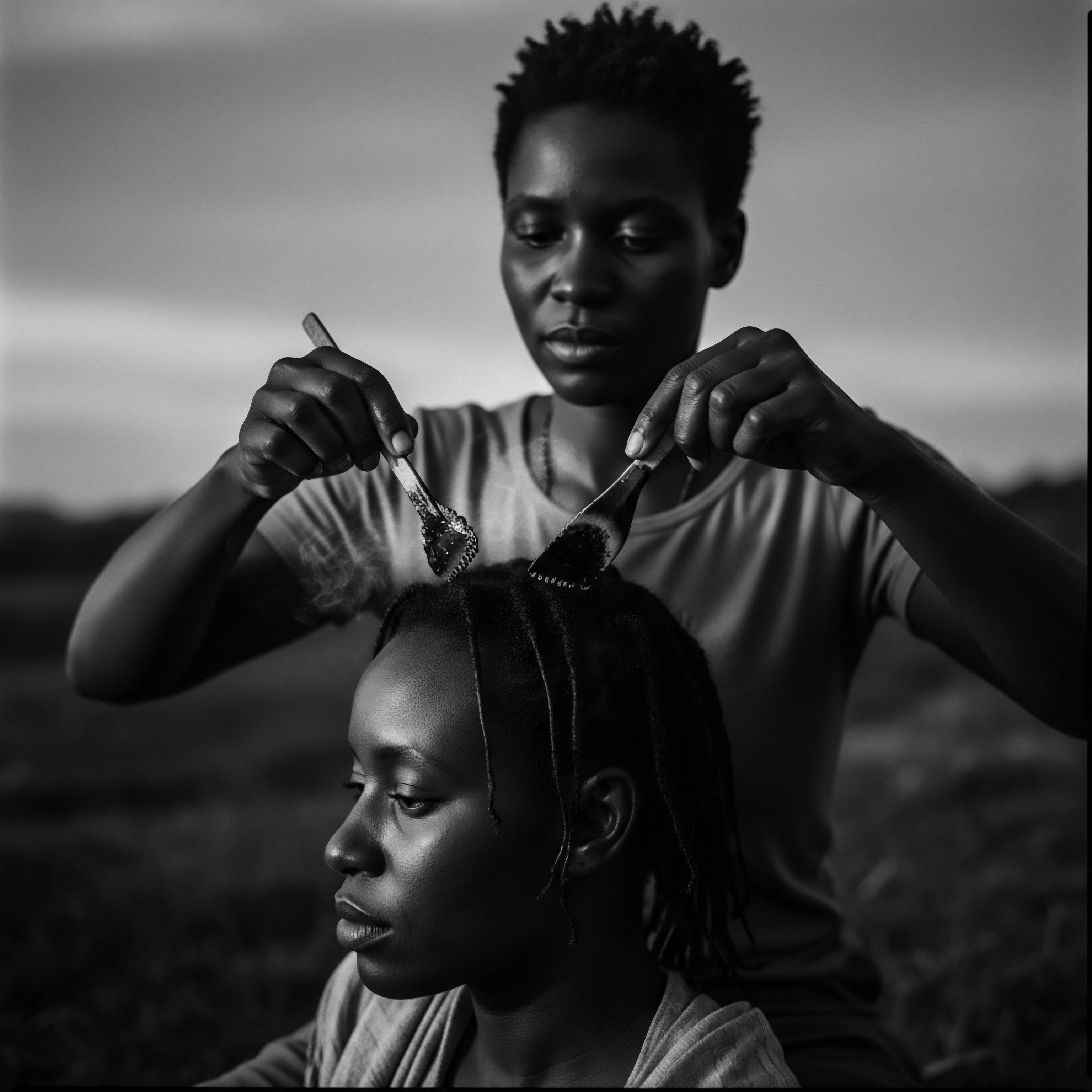
Academic
The academic delineation of Melanin Protection in textured hair necessitates a comprehensive examination of its biophysical attributes, its evolutionary advantages, and its profound sociocultural implications, particularly within the continuum of Black and mixed-race experiences. This concept is not merely a descriptive term for pigmentary defense; it represents a sophisticated biological adaptation and a cornerstone of heritage, influencing hair morphology, resilience, and the historical trajectory of care practices. The meaning of Melanin Protection, from an academic vantage, encompasses the intricate molecular mechanisms that confer protection, the ecological pressures that shaped its prevalence, and the enduring cultural reverence it has garnered.
Melanin, specifically Eumelanin, the dominant pigment in darker hair types, offers a superior photoprotective capacity compared to its lighter counterpart, pheomelanin. Eumelanin’s complex polymeric structure, characterized by its high molecular weight and intricate cross-linking, enables it to absorb a broad spectrum of electromagnetic radiation, including harmful ultraviolet A (UVA) and ultraviolet B (UVB) rays. This absorption process dissipates radiant energy as heat, thereby preventing the formation of damaging free radicals and minimizing photo-oxidative stress to the hair shaft’s keratin proteins and lipids.
Furthermore, eumelanin acts as a potent antioxidant, scavenging reactive oxygen species (ROS) that can compromise the integrity of the hair follicle and lead to premature aging of the hair, such as greying. This intrinsic antioxidant activity underscores a deeper, more active role of melanin beyond passive light absorption.
The structural characteristics of textured hair, including its elliptical cross-section and higher cuticle count, while contributing to its unique aesthetic and styling versatility, also present inherent challenges related to moisture retention and breakage susceptibility. The natural coiling pattern impedes the uniform distribution of sebum, the scalp’s natural conditioning oil, along the hair shaft, often leading to increased dryness at the ends. Yet, the elevated melanin content in these hair types provides a compensatory mechanism, bolstering the hair’s internal defense against environmental insults. This duality highlights a biological optimization where one feature (coiling) creates a vulnerability, while another (melanin content) provides a robust counter-measure, a testament to evolutionary adaptation in diverse environments.

The Unbound Helix ❉ Biocultural Adaptations and Enduring Resilience
From an anthropological perspective, the Melanin Protection inherent in textured hair is deeply intertwined with the ancestral environments from which these hair types emerged. Human populations originating in regions with intense solar radiation developed higher concentrations of melanin in their skin and hair as a survival advantage. This evolutionary adaptation extended to hair, where dense, coiled textures, combined with rich melanin, provided insulation against heat and a robust shield against UV damage. The hair acted as a natural canopy, protecting the scalp and brain from direct sun exposure, while its pigment absorbed and neutralized solar energy.
A compelling case study illustrating the historical and enduring significance of Melanin Protection within textured hair heritage can be found in the Historical Practices of Enslaved Africans in the Americas. Upon forced arrival in the “New World,” enslaved individuals were systematically stripped of their cultural markers, including their traditional hair tools and care rituals. The brutal conditions of forced labor, coupled with the absence of culturally relevant hair products and the imposition of Eurocentric beauty standards, led to severe hair neglect and damage. Despite these immense challenges, historical accounts and ethnographic studies reveal the ingenuity and resilience with which enslaved people adapted their hair care.
They utilized readily available natural resources—such as Animal Fats, Vegetable Oils Like Castor Oil, and Even Unconventional Substances Like Axle Grease—to lubricate, protect, and manage their hair. While these desperate measures were often driven by necessity and the desire to conform to oppressive standards, they implicitly leveraged and attempted to augment the hair’s natural Melanin Protection by providing external conditioning and a physical barrier against the elements. The very act of attempting to care for hair under such dehumanizing conditions speaks volumes about the deep-seated cultural value of hair and the inherent understanding of its need for protection, even when the specific scientific mechanisms were unknown. This resilience, born of ancestral knowledge and desperate innovation, allowed a degree of Melanin Protection to persist, demonstrating how cultural practices, even under duress, seek to preserve the hair’s natural capabilities.
This historical reality profoundly shaped the trajectory of Black hair care, giving rise to a legacy where hair health and protection became acts of both personal and communal resistance. The continuous effort to preserve the integrity of textured hair, despite societal pressures and limited resources, underscores the enduring understanding of its unique needs, a knowledge that implicitly honors its Melanin Protection. The development of early Black hair care enterprises, pioneered by figures like Madam C.J.
Walker, sought to address the specific challenges faced by textured hair, often drawing from traditional knowledge while incorporating new formulations. These innovations, in their essence, aimed to enhance the hair’s natural resilience and protect its inherent melanin-driven strength.
Furthermore, the concept of Melanin Protection extends to the psychosocial realm. For individuals with textured hair, particularly those of African descent, hair has long been a potent symbol of identity, self-expression, and resistance against dominant beauty norms. The deliberate choice to wear natural styles, embracing the full spectrum of coil patterns, is a powerful affirmation of self and heritage.
This act implicitly acknowledges the inherent beauty and protective capabilities of melanin-rich hair, moving beyond mere aesthetics to a deeper appreciation of its biological and cultural significance. The ongoing natural hair movement, therefore, represents a collective re-engagement with and celebration of Melanin Protection, a reclamation of ancestral wisdom in a contemporary context.
The academic meaning of Melanin Protection reveals a profound interplay of biological adaptation, historical resilience, and ongoing cultural affirmation, deeply rooted in the ancestral legacy of textured hair.

Interconnected Incidences and Future Trajectories
The scientific understanding of Melanin Protection continues to evolve, revealing its complex role in mitigating oxidative stress and maintaining hair vitality. Research into the longevity of melanocytes within the hair follicle and the mechanisms of greying points to the vulnerability of these pigment-producing cells to reactive oxygen species. This understanding validates the historical emphasis on nourishing and protecting the scalp and hair, as healthy melanocytes are essential for sustained melanin production. The implication for modern hair care is clear ❉ strategies that support scalp health and provide antioxidant defense directly contribute to preserving Melanin Protection over time.
Consider the intricate relationship between hair structure and melanin distribution. The cortical cells of textured hair, packed with eumelanin, form a robust barrier against environmental degradation. This inherent strength is a key factor in the longevity of certain traditional styles, like locs, which can be maintained for decades, benefiting from minimal manipulation and consistent care that works in concert with the hair’s natural defenses. The success of such styles speaks to a profound, intuitive understanding of how to preserve the hair’s intrinsic Melanin Protection.
The ongoing academic discourse surrounding Melanin Protection also intersects with discussions of hair discrimination and equity. A study conducted by Dove in the UK found that half of Black and mixed women with afro-textured hair have faced discrimination because of their hair. This systemic prejudice, often rooted in colonial-era biases against natural hair textures, undermines the cultural significance and inherent protective qualities of melanin-rich hair.
By elevating the academic understanding of Melanin Protection, we contribute to a more informed societal appreciation of textured hair, fostering environments where its natural attributes are celebrated rather than stigmatized. This deeper knowledge provides a scientific foundation for advocating for policies that protect the right to wear natural hair, acknowledging its biological integrity and cultural value.
The academic investigation into Melanin Protection provides a robust framework for understanding the resilience of textured hair. It bridges the chasm between biological science and cultural studies, revealing how environmental adaptations became intertwined with human practices and identity. This scholarly approach illuminates the enduring legacy of care, resistance, and self-affirmation embedded within every strand of melanin-rich hair.
- Eumelanin Concentration ❉ Darker hair, rich in eumelanin, exhibits superior UV absorption and antioxidant properties, protecting against photo-degradation and oxidative stress.
- Hair Follicle Morphology ❉ The elliptical shape of textured hair follicles contributes to its unique coiling, influencing sebum distribution and necessitating specific moisturizing practices to support melanin’s protective role.
- Historical Adaptation ❉ Ancestral hair care practices, from oiling to protective styling, implicitly enhanced Melanin Protection, demonstrating a deep, empirical understanding of hair’s needs in diverse climates.
- Sociocultural Significance ❉ The cultural value placed on melanin-rich hair across Black and mixed-race communities has fostered a legacy of care and resistance, affirming its inherent strength and beauty despite historical oppression.
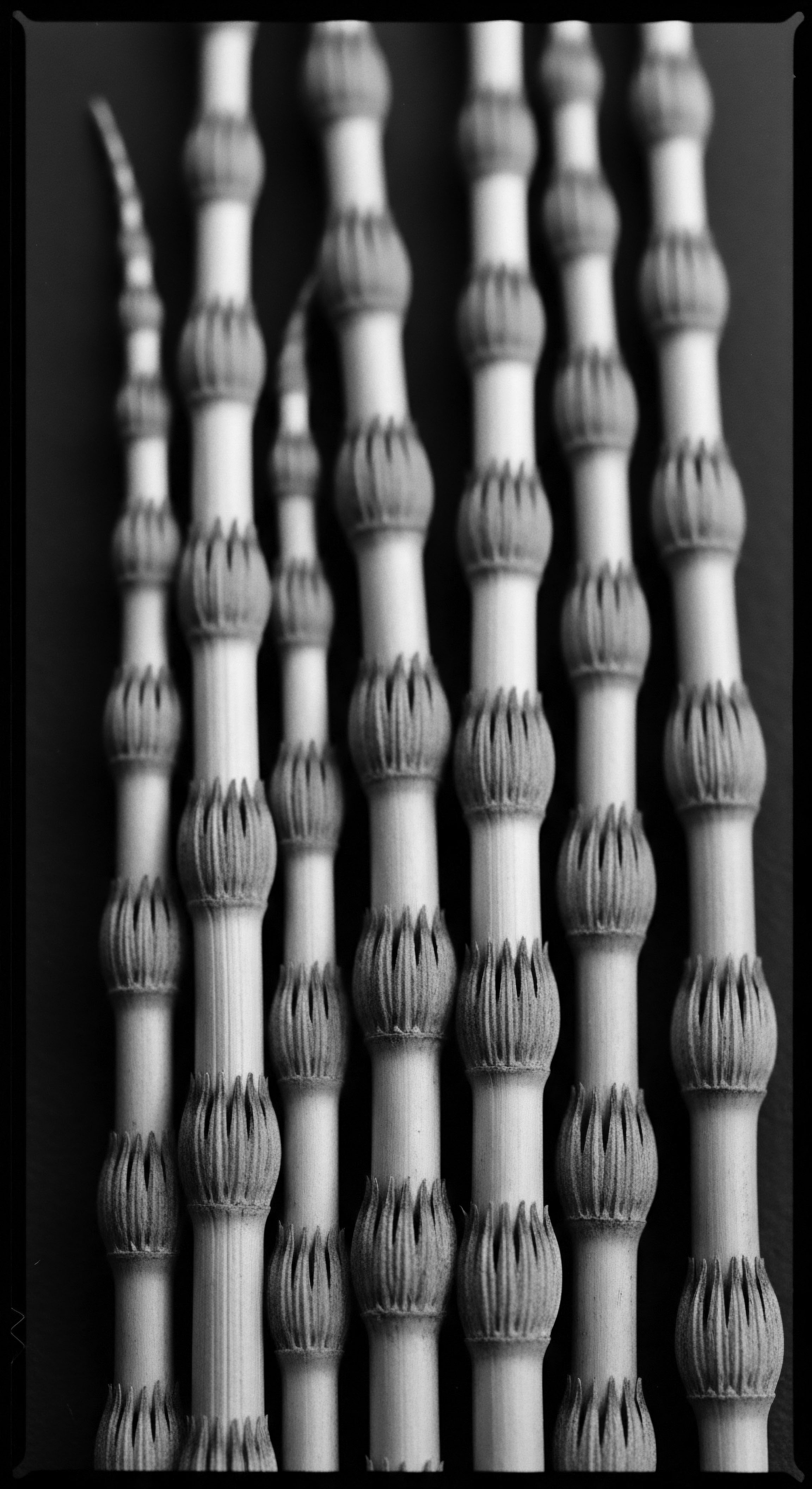
Reflection on the Heritage of Melanin Protection
As we conclude this exploration of Melanin Protection, we are invited to consider its enduring resonance within the very Soul of a Strand. This concept transcends a mere scientific definition; it is a profound meditation on the resilience, beauty, and inherited wisdom embedded within textured hair. The journey from the elemental biology of melanin to its shaping of ancestral care practices and its role in voicing identity speaks to an unbroken lineage, a continuous narrative woven through time.
The Melanin Protection, a gift passed down through generations, reminds us that our hair carries echoes of ancient suns and whispers of hands that meticulously braided and oiled, nurturing strength and vitality. It is a testament to the ingenuity of our forebears who, through observation and lived experience, understood the needs of their melanin-rich strands long before microscopes revealed cellular intricacies. Their rituals of care were not simply cosmetic; they were acts of reverence, recognizing the hair as a sacred extension of self and community, a symbol of life’s continuity.
To appreciate Melanin Protection today is to honor this profound heritage. It calls us to connect with the deep roots of our hair traditions, recognizing that the very structure and pigment of textured hair embody a legacy of adaptation and survival. The coiled helix, imbued with eumelanin, stands as a quiet yet powerful declaration of strength, a living archive of resilience against environmental challenges and historical adversities. Each strand, therefore, holds a story, a testament to the enduring spirit that found ways to protect, preserve, and celebrate its crowning glory, passing this wisdom across continents and centuries.
The future of textured hair care, guided by this holistic understanding, beckons us to harmonize scientific advancements with ancestral wisdom. It is a call to nurture our strands with conscious intention, recognizing their unique biology and their deep cultural significance. In doing so, we not only protect our hair but also affirm a heritage that is vibrant, robust, and eternally unbound.
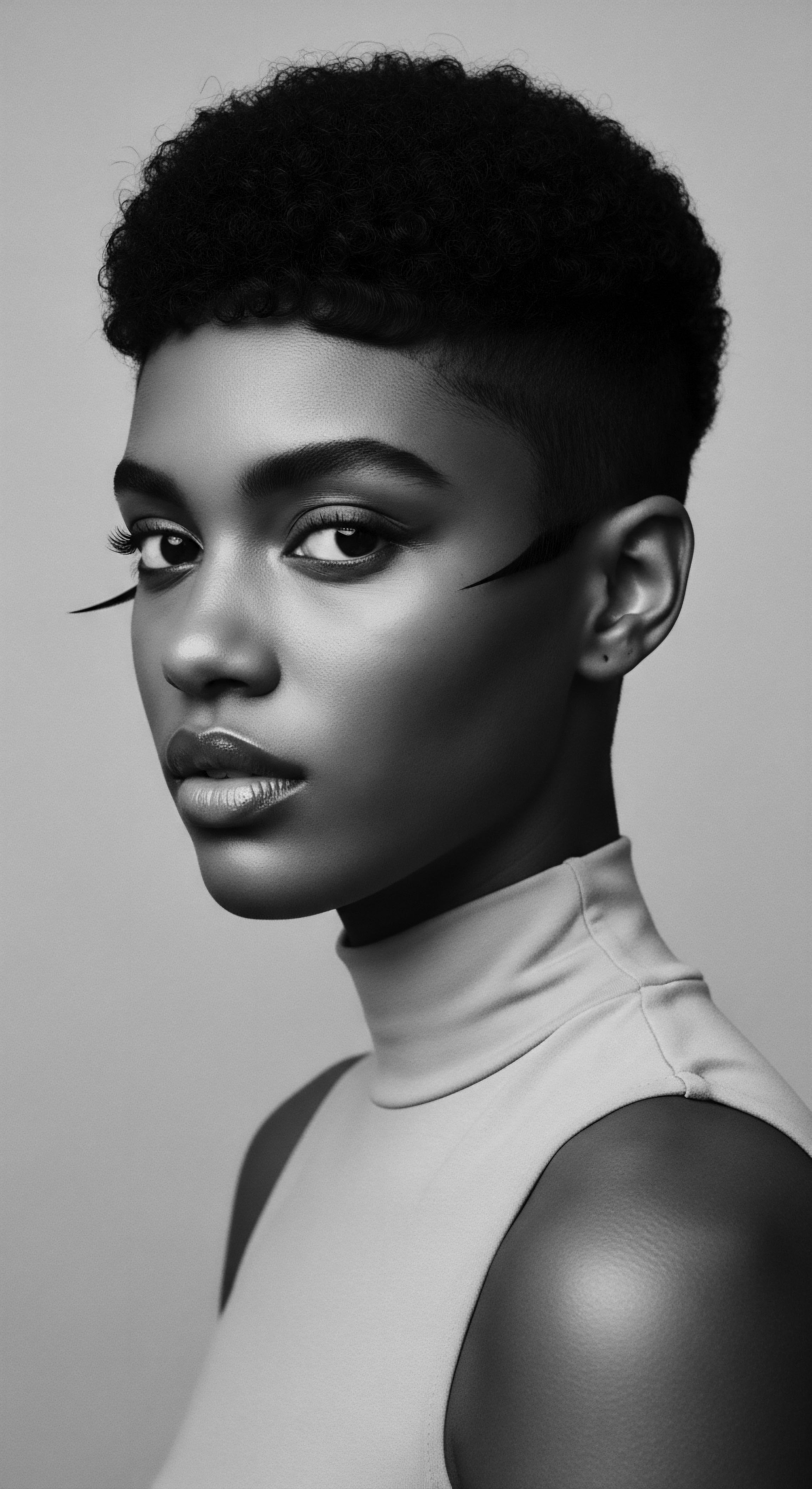
References
- Byrd, A. D. & Tharps, L. L. (2001). Hair Story ❉ Untangling the Roots of Black Hair in America. St. Martin’s Press.
- Barnes, C. (1988). Melanin ❉ The Chemical Key to Black Greatness ❉ The Harmful Effects of Toxic Drugs on Melanin Centers Within the Black Human. Melanin Technologies.
- Biddle-Perry, G. & Harlow, M. (Eds.). (2018). A Cultural History of Hair, Volume 1 ❉ A Cultural History of Hair in Antiquity. Bloomsbury Academic.
- Gherardini, J. & Karagün, E. (2024). Why Does Hair Turn White?. Doç. Dr. Ebru Karagün.
- Jacobs-Huey, L. (2006). The Politics of Black Women’s Hair ❉ Cultural Identity and Self-Expression. Rutgers University Press.
- King, V. & Niabaly, D. (2013). The Politics of Black Women’s Hair. Journal of Undergraduate Research at Minnesota State University, Mankato, 13, Article 4.
- Sivagurunathan, M. & Palaniappan, P. (2024). Herbal insights into melanin synthesis ❉ Enhancing hair health naturally. International Journal of Research in Pharmacy and Pharmaceutical Sciences, 9(1), 105-110.
- Tobin, D. J. & Paus, R. (2001). Oxidative Stress in Ageing of Hair. Journal of Investigative Dermatology Symposium Proceedings, 6(1), 22-26.
- Uche, I. (2023). What Every Dermatologist Must Know About the History of Black Hair. Dermatology Times.
- Wade, S. (2024). A Crowning Glory ❉ Hair as History, Identity, and Ritual. Khumbula.
